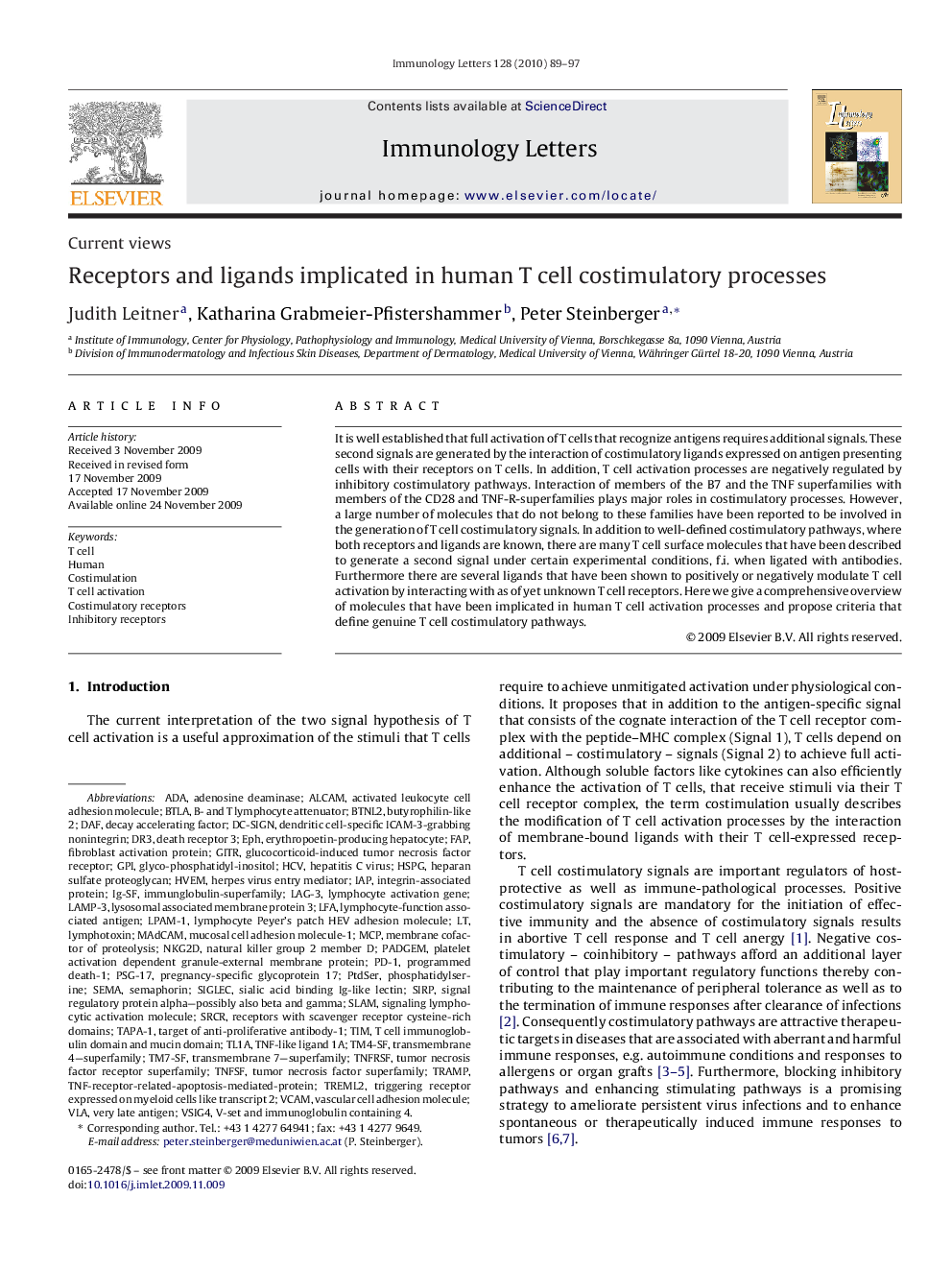| Article ID | Journal | Published Year | Pages | File Type |
|---|---|---|---|---|
| 6117496 | Immunology Letters | 2010 | 9 Pages |
Abstract
It is well established that full activation of T cells that recognize antigens requires additional signals. These second signals are generated by the interaction of costimulatory ligands expressed on antigen presenting cells with their receptors on T cells. In addition, T cell activation processes are negatively regulated by inhibitory costimulatory pathways. Interaction of members of the B7 and the TNF superfamilies with members of the CD28 and TNF-R-superfamilies plays major roles in costimulatory processes. However, a large number of molecules that do not belong to these families have been reported to be involved in the generation of T cell costimulatory signals. In addition to well-defined costimulatory pathways, where both receptors and ligands are known, there are many T cell surface molecules that have been described to generate a second signal under certain experimental conditions, f.i. when ligated with antibodies. Furthermore there are several ligands that have been shown to positively or negatively modulate T cell activation by interacting with as of yet unknown T cell receptors. Here we give a comprehensive overview of molecules that have been implicated in human T cell activation processes and propose criteria that define genuine T cell costimulatory pathways.
Keywords
TL1AHSPGDC-SIGNNKG2DGITRnatural killer group 2 member DCostimulationTIMVLATNFRSFPtdSerDR3Vsig4LAG-3BTNL2SIRPTNFSFSRCRMAdCAMIg-SFMCPPD-1DAFLFAGPiBTLAIAPVCAMFAPHVEMadenosine deaminaseSemavery late antigenSLAMEphHumanTRAMPtumor necrosis factor receptor superfamilyT cellSemaphorinSiglecTumor necrosis factor superfamilyPhosphatidylserineT cell activationLymphotoxinProgrammed death-1ALCAMsignaling lymphocytic activation moleculevascular cell adhesion moleculeactivated leukocyte cell adhesion moleculeHepatitis C virusHCVHeparan sulfate proteoglycanADAherpes virus entry mediatorFibroblast activation proteinintegrin-associated proteinDecay accelerating factorGlucocorticoid-induced tumor necrosis factor receptordeath receptor 3Inhibitory receptors
Related Topics
Life Sciences
Immunology and Microbiology
Immunology
Authors
Judith Leitner, Katharina Grabmeier-Pfistershammer, Peter Steinberger,
